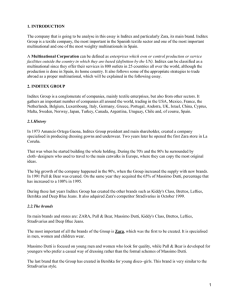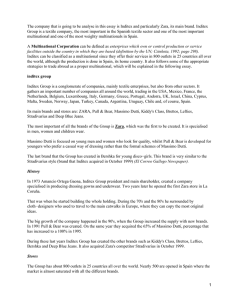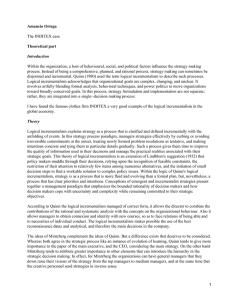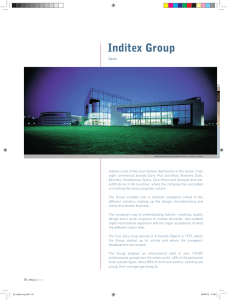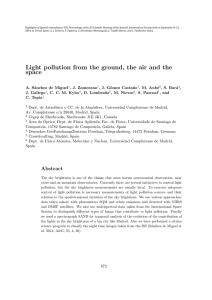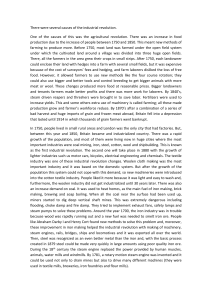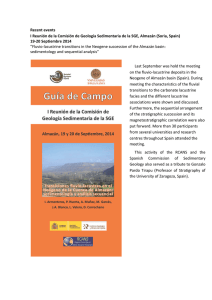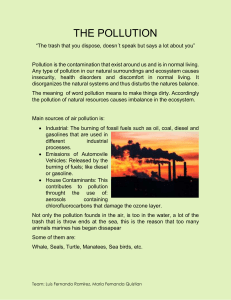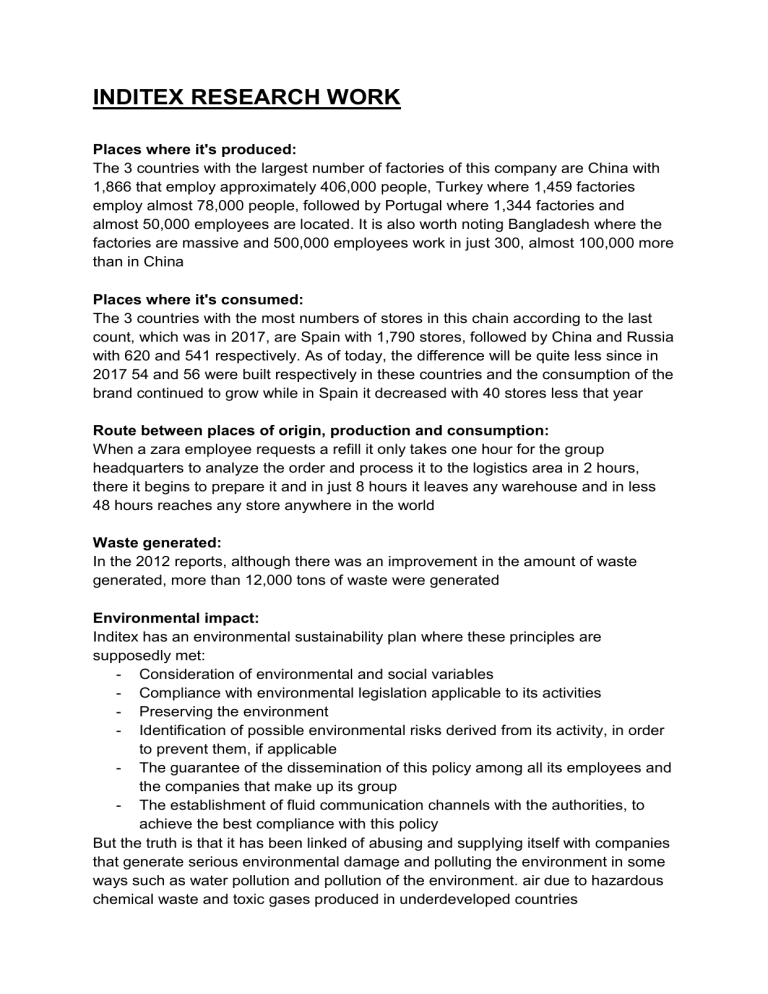
INDITEX RESEARCH WORK Places where it's produced: The 3 countries with the largest number of factories of this company are China with 1,866 that employ approximately 406,000 people, Turkey where 1,459 factories employ almost 78,000 people, followed by Portugal where 1,344 factories and almost 50,000 employees are located. It is also worth noting Bangladesh where the factories are massive and 500,000 employees work in just 300, almost 100,000 more than in China Places where it's consumed: The 3 countries with the most numbers of stores in this chain according to the last count, which was in 2017, are Spain with 1,790 stores, followed by China and Russia with 620 and 541 respectively. As of today, the difference will be quite less since in 2017 54 and 56 were built respectively in these countries and the consumption of the brand continued to grow while in Spain it decreased with 40 stores less that year Route between places of origin, production and consumption: When a zara employee requests a refill it only takes one hour for the group headquarters to analyze the order and process it to the logistics area in 2 hours, there it begins to prepare it and in just 8 hours it leaves any warehouse and in less 48 hours reaches any store anywhere in the world Waste generated: In the 2012 reports, although there was an improvement in the amount of waste generated, more than 12,000 tons of waste were generated Environmental impact: Inditex has an environmental sustainability plan where these principles are supposedly met: - Consideration of environmental and social variables - Compliance with environmental legislation applicable to its activities - Preserving the environment - Identification of possible environmental risks derived from its activity, in order to prevent them, if applicable - The guarantee of the dissemination of this policy among all its employees and the companies that make up its group - The establishment of fluid communication channels with the authorities, to achieve the best compliance with this policy But the truth is that it has been linked of abusing and supplying itself with companies that generate serious environmental damage and polluting the environment in some ways such as water pollution and pollution of the environment. air due to hazardous chemical waste and toxic gases produced in underdeveloped countries Social impact: In developed countries with strict laws, working conditions despite not being the best are decent, while in countries such as China, India or Indonesia (apart from many others, but these are the main ones) despite not having concise research, it is known that the environment is contaminated, as has been said in the previous point, which worsens the quality of life in these areas, workers work in poor conditions and with very low wages and the most of the workers are child working in bad conditions also called as child exploitation which occurred even in Brazil where the government opened an investigation against Inditex According to a recent report, factory production uses carbon disulfide, which is flammable and is causing certain damages to workers and people living in the area where this activity occurs. The toxin has been linked to cases of birth defects, coronary heart disease, skin disease, and cancer. Gender differences: According to Inditex and its most recent reports, its employees receive the same worldwide, although it is not known how true this report is but what we know is that women are negatively affected because most workers in textile factories are women so they are more affected by the poor working conditions and labour explotaition
